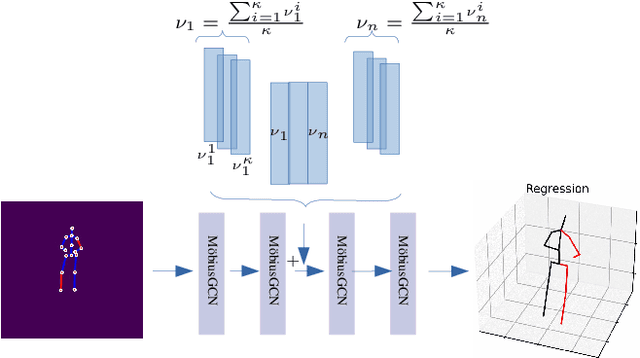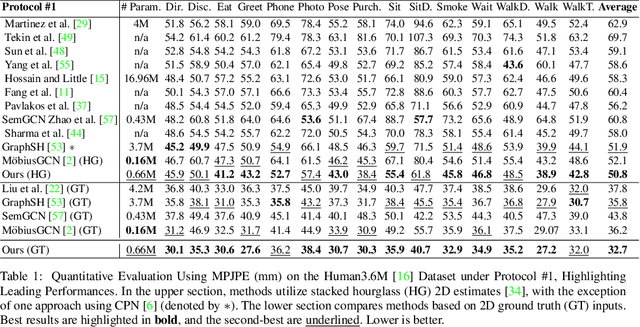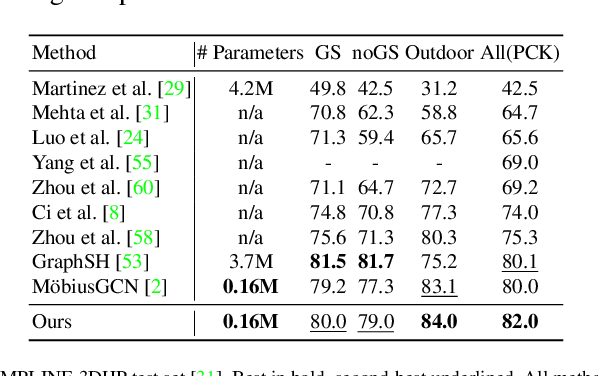Mohsen Fayyaz
Multilingual Routing in Mixture-of-Experts
Oct 06, 2025Abstract:Mixture-of-Experts (MoE) architectures have become the key to scaling modern LLMs, yet little is understood about how their sparse routing dynamics respond to multilingual data. In this work, we analyze expert routing patterns using parallel multilingual datasets and present highly interpretable layer-wise phenomena. We find that MoE models route tokens in language-specific ways in the early and late decoder layers but exhibit significant cross-lingual routing alignment in middle layers, mirroring parameter-sharing trends observed in dense LLMs. In particular, we reveal a clear, strong correlation between a model's performance in a given language and how similarly its tokens are routed to English in these layers. Extending beyond correlation, we explore inference-time interventions that induce higher cross-lingual routing alignment. We introduce a method that steers the router by promoting middle-layer task experts frequently activated in English, and it successfully increases multilingual performance. These 1-2% gains are remarkably consistent across two evaluation tasks, three models, and 15+ languages, especially given that these simple interventions override routers of extensively trained, state-of-the-art LLMs. In comparison, interventions outside of the middle layers or targeting multilingual-specialized experts only yield performance degradation. Altogether, we present numerous findings that explain how MoEs process non-English text and demonstrate that generalization is limited by the model's ability to leverage language-universal experts in all languages.
Steering MoE LLMs via Expert (De)Activation
Sep 11, 2025Abstract:Mixture-of-Experts (MoE) in Large Language Models (LLMs) routes each token through a subset of specialized Feed-Forward Networks (FFN), known as experts. We present SteerMoE, a framework for steering MoE models by detecting and controlling behavior-linked experts. Our detection method identifies experts with distinct activation patterns across paired inputs exhibiting contrasting behaviors. By selectively (de)activating such experts during inference, we control behaviors like faithfulness and safety without retraining or modifying weights. Across 11 benchmarks and 6 LLMs, our steering raises safety by up to +20% and faithfulness by +27%. In adversarial attack mode, it drops safety by -41% alone, and -100% when combined with existing jailbreak methods, bypassing all safety guardrails and exposing a new dimension of alignment faking hidden within experts.
Collapse of Dense Retrievers: Short, Early, and Literal Biases Outranking Factual Evidence
Mar 06, 2025Abstract:Dense retrieval models are commonly used in Information Retrieval (IR) applications, such as Retrieval-Augmented Generation (RAG). Since they often serve as the first step in these systems, their robustness is critical to avoid failures. In this work, by repurposing a relation extraction dataset (e.g. Re-DocRED), we design controlled experiments to quantify the impact of heuristic biases, such as favoring shorter documents, in retrievers like Dragon+ and Contriever. Our findings reveal significant vulnerabilities: retrievers often rely on superficial patterns like over-prioritizing document beginnings, shorter documents, repeated entities, and literal matches. Additionally, they tend to overlook whether the document contains the query's answer, lacking deep semantic understanding. Notably, when multiple biases combine, models exhibit catastrophic performance degradation, selecting the answer-containing document in less than 3% of cases over a biased document without the answer. Furthermore, we show that these biases have direct consequences for downstream applications like RAG, where retrieval-preferred documents can mislead LLMs, resulting in a 34% performance drop than not providing any documents at all.
DeltaLLM: Compress LLMs with Low-Rank Deltas between Shared Weights
Jan 30, 2025Abstract:We introduce DeltaLLM, a new post-training compression technique to reduce the memory footprint of LLMs. We propose an alternative way of structuring LLMs with weight sharing between layers in subsequent Transformer blocks, along with additional low-rank difference matrices between them. For training, we adopt the progressing module replacement method and show that the lightweight training of the low-rank modules with approximately 30M-40M tokens is sufficient to achieve performance on par with LLMs of comparable sizes trained from scratch. We release the resultant models, DeltaLLAMA and DeltaPHI, with a 12% parameter reduction, retaining 90% of the performance of the base Llama and Phi models on common knowledge and reasoning benchmarks. Our method also outperforms compression techniques JointDrop, LaCo, ShortGPT and SliceGPT with the same number of parameters removed. For example, DeltaPhi 2.9B with a 24% reduction achieves similar average zero-shot accuracies as recovery fine-tuned SlicedPhi 3.3B with a 12% reduction, despite being approximately 400M parameters smaller with no fine-tuning applied. This work provides new insights into LLM architecture design and compression methods when storage space is critical.
MRAG-Bench: Vision-Centric Evaluation for Retrieval-Augmented Multimodal Models
Oct 10, 2024Abstract:Existing multimodal retrieval benchmarks primarily focus on evaluating whether models can retrieve and utilize external textual knowledge for question answering. However, there are scenarios where retrieving visual information is either more beneficial or easier to access than textual data. In this paper, we introduce a multimodal retrieval-augmented generation benchmark, MRAG-Bench, in which we systematically identify and categorize scenarios where visually augmented knowledge is better than textual knowledge, for instance, more images from varying viewpoints. MRAG-Bench consists of 16,130 images and 1,353 human-annotated multiple-choice questions across 9 distinct scenarios. With MRAG-Bench, we conduct an evaluation of 10 open-source and 4 proprietary large vision-language models (LVLMs). Our results show that all LVLMs exhibit greater improvements when augmented with images compared to textual knowledge, confirming that MRAG-Bench is vision-centric. Additionally, we conduct extensive analysis with MRAG-Bench, which offers valuable insights into retrieval-augmented LVLMs. Notably, the top-performing model, GPT-4o, faces challenges in effectively leveraging retrieved knowledge, achieving only a 5.82% improvement with ground-truth information, in contrast to a 33.16% improvement observed in human participants. These findings highlight the importance of MRAG-Bench in encouraging the community to enhance LVLMs' ability to utilize retrieved visual knowledge more effectively.
Evaluating Human Alignment and Model Faithfulness of LLM Rationale
Jun 28, 2024



Abstract:We study how well large language models (LLMs) explain their generations with rationales -- a set of tokens extracted from the input texts that reflect the decision process of LLMs. We examine LLM rationales extracted with two methods: 1) attribution-based methods that use attention or gradients to locate important tokens, and 2) prompting-based methods that guide LLMs to extract rationales using prompts. Through extensive experiments, we show that prompting-based rationales align better with human-annotated rationales than attribution-based rationales, and demonstrate reasonable alignment with humans even when model performance is poor. We additionally find that the faithfulness limitations of prompting-based methods, which are identified in previous work, may be linked to their collapsed predictions. By fine-tuning these models on the corresponding datasets, both prompting and attribution methods demonstrate improved faithfulness. Our study sheds light on more rigorous and fair evaluations of LLM rationales, especially for prompting-based ones.
Occlusion Handling in 3D Human Pose Estimation with Perturbed Positional Encoding
May 27, 2024



Abstract:Understanding human behavior fundamentally relies on accurate 3D human pose estimation. Graph Convolutional Networks (GCNs) have recently shown promising advancements, delivering state-of-the-art performance with rather lightweight architectures. In the context of graph-structured data, leveraging the eigenvectors of the graph Laplacian matrix for positional encoding is effective. Yet, the approach does not specify how to handle scenarios where edges in the input graph are missing. To this end, we propose a novel positional encoding technique, PerturbPE, that extracts consistent and regular components from the eigenbasis. Our method involves applying multiple perturbations and taking their average to extract the consistent and regular component from the eigenbasis. PerturbPE leverages the Rayleigh-Schrodinger Perturbation Theorem (RSPT) for calculating the perturbed eigenvectors. Employing this labeling technique enhances the robustness and generalizability of the model. Our results support our theoretical findings, e.g. our experimental analysis observed a performance enhancement of up to $12\%$ on the Human3.6M dataset in instances where occlusion resulted in the absence of one edge. Furthermore, our novel approach significantly enhances performance in scenarios where two edges are missing, setting a new benchmark for state-of-the-art.
MemLLM: Finetuning LLMs to Use An Explicit Read-Write Memory
Apr 17, 2024



Abstract:While current large language models (LLMs) demonstrate some capabilities in knowledge-intensive tasks, they are limited by relying on their parameters as an implicit storage mechanism. As a result, they struggle with infrequent knowledge and temporal degradation. In addition, the uninterpretable nature of parametric memorization makes it challenging to understand and prevent hallucination. Parametric memory pools and model editing are only partial solutions. Retrieval Augmented Generation (RAG) $\unicode{x2013}$ though non-parametric $\unicode{x2013}$ has its own limitations: it lacks structure, complicates interpretability and makes it hard to effectively manage stored knowledge. In this paper, we introduce MemLLM, a novel method of enhancing LLMs by integrating a structured and explicit read-and-write memory module. MemLLM tackles the aforementioned challenges by enabling dynamic interaction with the memory and improving the LLM's capabilities in using stored knowledge. Our experiments indicate that MemLLM enhances the LLM's performance and interpretability, in language modeling in general and knowledge-intensive tasks in particular. We see MemLLM as an important step towards making LLMs more grounded and factual through memory augmentation.
DecompX: Explaining Transformers Decisions by Propagating Token Decomposition
Jun 05, 2023



Abstract:An emerging solution for explaining Transformer-based models is to use vector-based analysis on how the representations are formed. However, providing a faithful vector-based explanation for a multi-layer model could be challenging in three aspects: (1) Incorporating all components into the analysis, (2) Aggregating the layer dynamics to determine the information flow and mixture throughout the entire model, and (3) Identifying the connection between the vector-based analysis and the model's predictions. In this paper, we present DecompX to tackle these challenges. DecompX is based on the construction of decomposed token representations and their successive propagation throughout the model without mixing them in between layers. Additionally, our proposal provides multiple advantages over existing solutions for its inclusion of all encoder components (especially nonlinear feed-forward networks) and the classification head. The former allows acquiring precise vectors while the latter transforms the decomposition into meaningful prediction-based values, eliminating the need for norm- or summation-based vector aggregation. According to the standard faithfulness evaluations, DecompX consistently outperforms existing gradient-based and vector-based approaches on various datasets. Our code is available at https://github.com/mohsenfayyaz/DecompX.
RET-LLM: Towards a General Read-Write Memory for Large Language Models
May 23, 2023



Abstract:Large language models (LLMs) have significantly advanced the field of natural language processing (NLP) through their extensive parameters and comprehensive data utilization. However, existing LLMs lack a dedicated memory unit, limiting their ability to explicitly store and retrieve knowledge for various tasks. In this paper, we propose RET-LLM a novel framework that equips LLMs with a general write-read memory unit, allowing them to extract, store, and recall knowledge from the text as needed for task performance. Inspired by Davidsonian semantics theory, we extract and save knowledge in the form of triplets. The memory unit is designed to be scalable, aggregatable, updatable, and interpretable. Through qualitative evaluations, we demonstrate the superiority of our proposed framework over baseline approaches in question answering tasks. Moreover, our framework exhibits robust performance in handling temporal-based question answering tasks, showcasing its ability to effectively manage time-dependent information.
 Add to Chrome
Add to Chrome Add to Firefox
Add to Firefox Add to Edge
Add to Edge